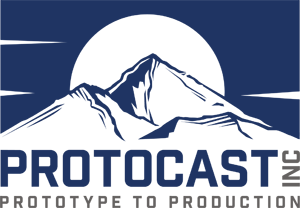
March 17, 2017 | Prototype Casting
Metal Castings
Ordering castings from your metal foundry can be a time-consuming process. A cooperative effort between you and the foundry is essential in successfully sourcing a casting product. In order to help avoid misunderstandings and reduce costs, the following information should be addressed when requesting a quote.
Design
Any cast metal part should be designed to take full advantage of the casting process, allowing for more efficient production of the item. Make sure you include a pattern and the number of castings to be produced.
Materials
There are industry standard specifications that provide customers with the necessary tools to establish criteria for most any casting application. However, these standards don’t include any special requirements that your product might need. If these specs aren’t properly and clearly stated, it can lead to misunderstandings and potentially higher costs.
Soundness
Soundness of metal components refers to the level of freedom from impurities as well as discontinuities like slag inclusions, sand inclusions, and shrinkage. Rejection and acceptance criteria for casting products need to be determined at the time a quotation as it could affect pricing and the casting process.
Patterns
Pattern equipment design is yet another potential point of misunderstanding. The customer and the foundry need to take steps to ensure everybody is on the same page.
Thickness
All castings have a minimum thickness that affects rigidity. Foundries use strength and rigidity calculations to work out just how thin a casting can be. Castings designed thinner than specs may make the project uncastable.
Beyond these basics, there are other levels of requirements that affect a casting cost. We will take a look at those considerations at a later date.


